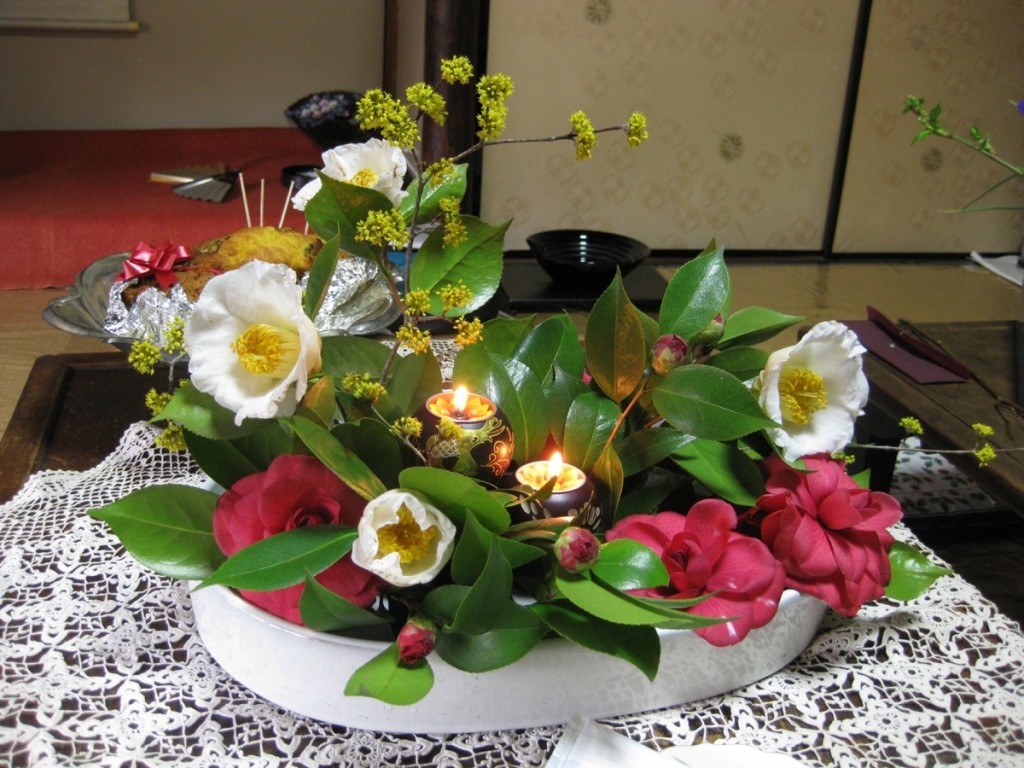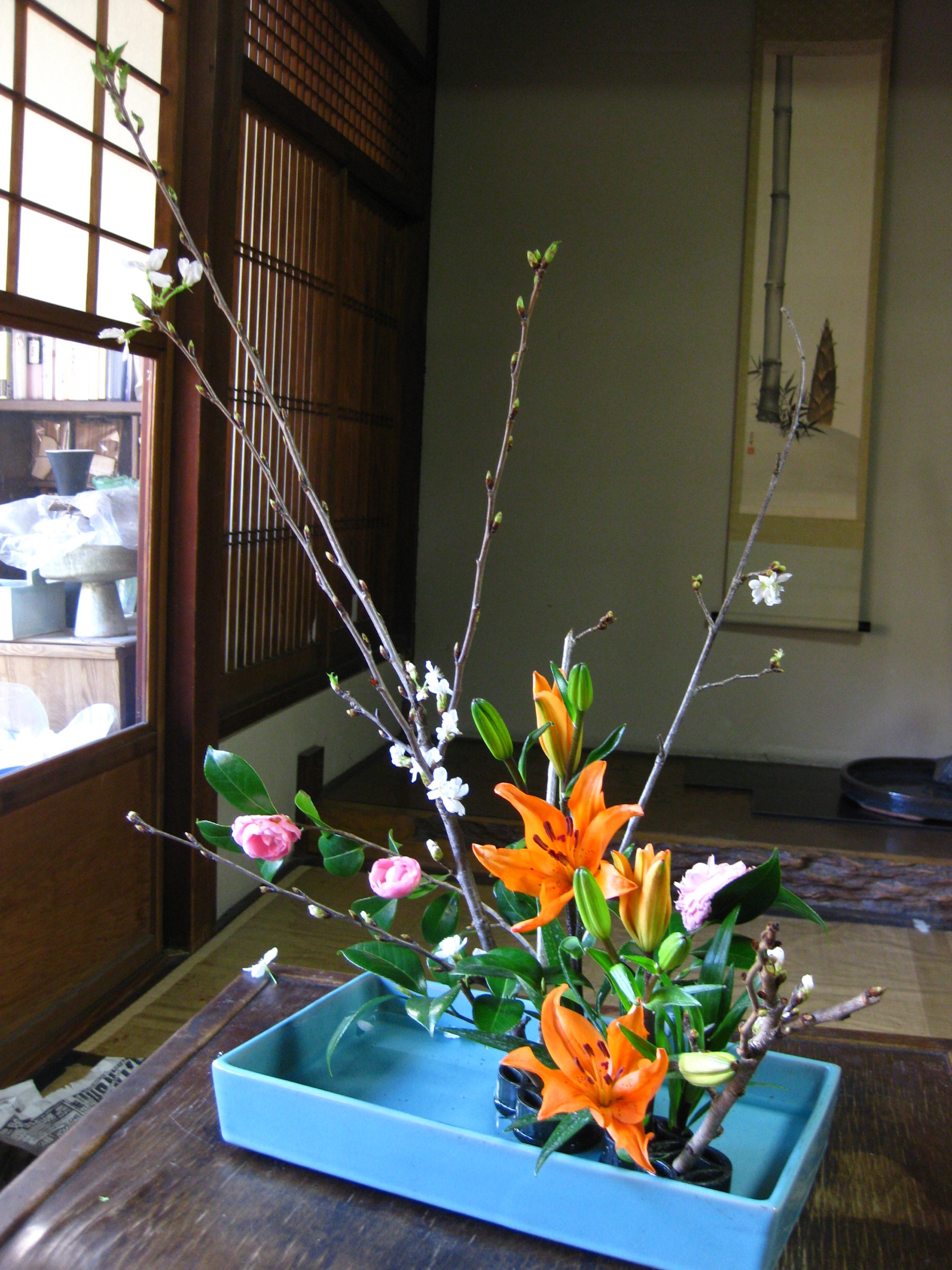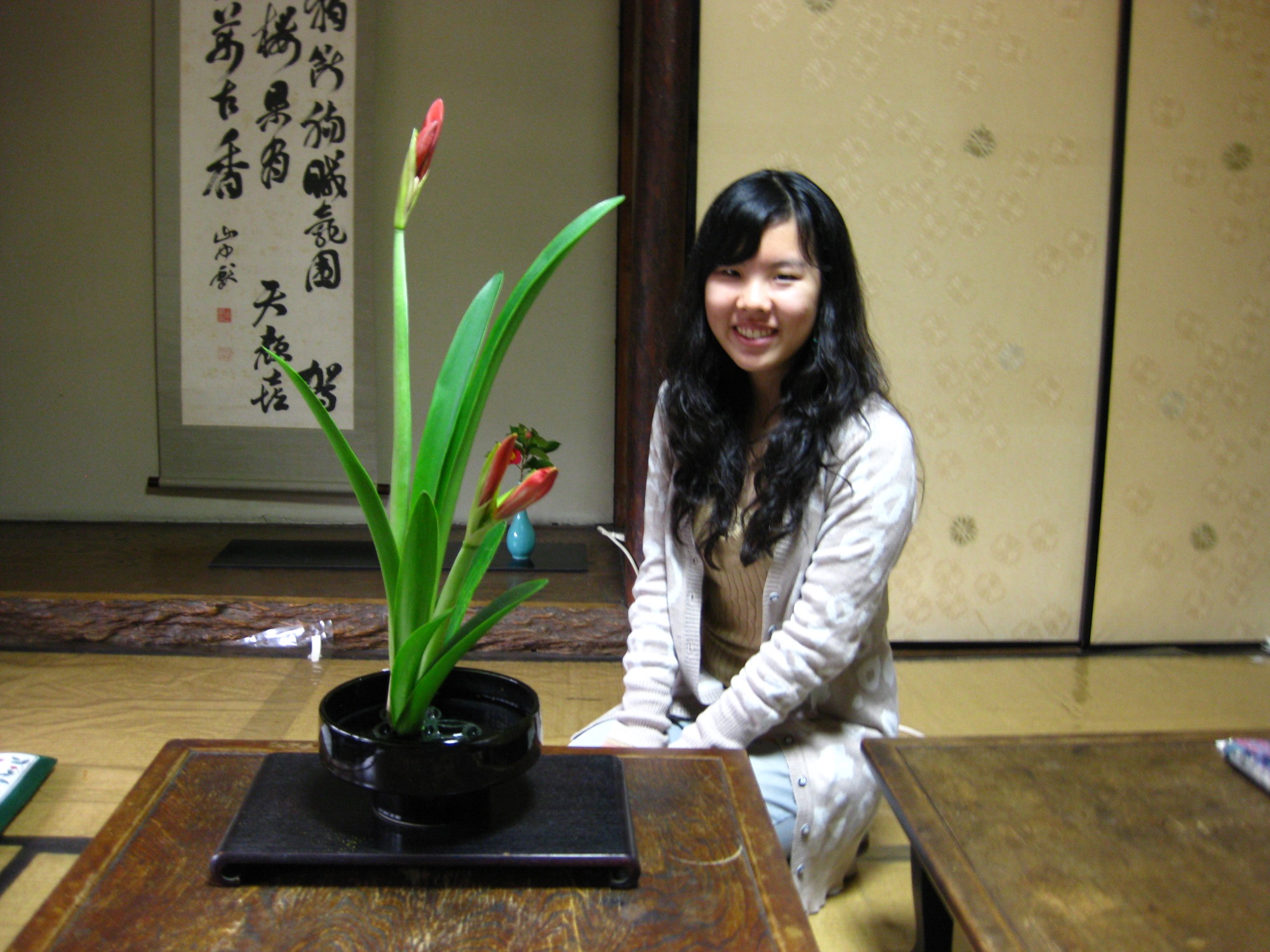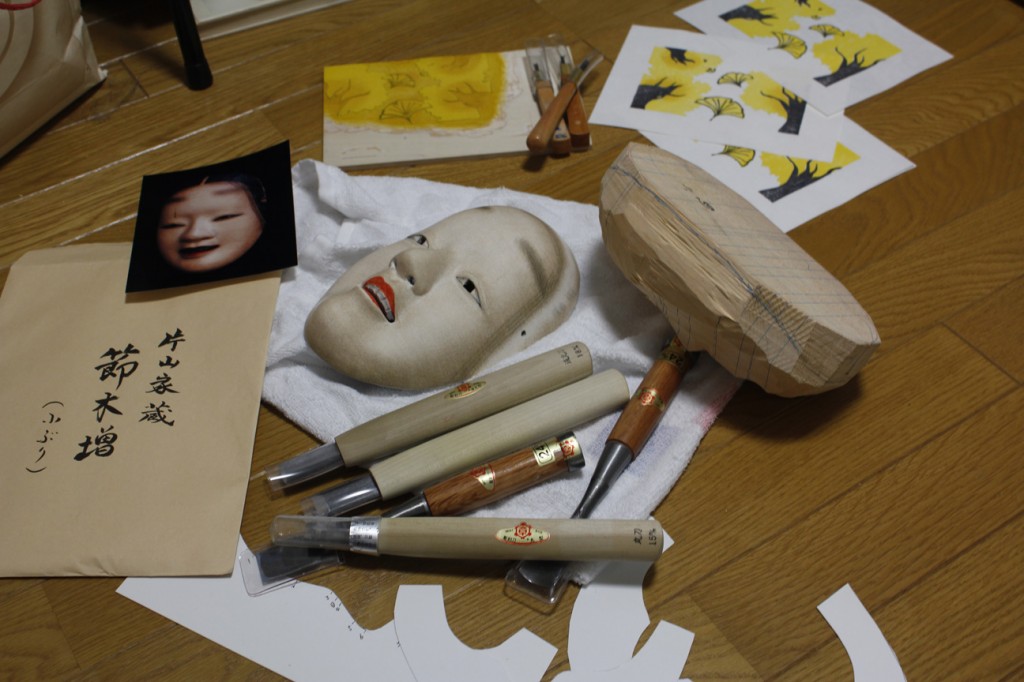Before coming to Japan, my first and only encounter with ikebana was at a party held by my university’s Japanese department. It was not so much the product but the process, executed with such precision and elegance by my sensei, that moved me the most. Needless to say, when my KCJS sensei and I found out about several ikebana classrooms in Kyoto, I was ready to try my hands on creating ikebana of my own.
Now, after only six lessons, I am obviously still very far from understanding—not to mention achieving—that elegance. But along the way I have had a lot of fun learning about ikebana and interacting with my Japanese sensei and classmates.
Niwa-sensei, who just turned 79 last month, is a connoisseur of traditional Japanese arts. She enjoys showing and explaining to me about her collection of paintings, calligraphy scrolls, and other obviously expensive antiques. Our lessons take place at her Japanese-style house, and the displays of ikebana and crafts at the genkan and the tokonoma are frequently changed, making my lessons into a time for appreciation of Japanese arts. The first time I was there, she led me into a room and in front of a tokonoma, where she had placed a small vase of pine and a scroll of painting that complemented the ikebana. Pine is the plant of the winter, she explained. That was when I realized that acknowledging the current environment and time is very important in ikebana.
My four or five classmates (the number and people always change at each lesson because of different schedules) are all middle-aged Japanese women, which was not surprising to me at all. At every lesson, Niwa-sensei gives us each a sheet that explains the structural concept of the ikebana that we would do for today. The container is usually preselected by sensei, who has a collection of vases, plates and bowls for ikebana. We then unwrap our bundles of flowers and proceed to selecting, cutting and bending them in order to create the design we want. I receive frequent verbal instructions from Niwa-sensei, sometimes down to the specifics such as the angle at which I should place a particular branch. This is perhaps because I am only a beginner. Even though sensei and the students complimented on my works often, sometimes I wonder how lost I would be if I were to complete an ikebana work completely by myself.
Although we each sit at a separate table during class time and concentrate on finishing our work, the atmosphere is quite laid-back and sometimes small conversations pop up here and there among the students. Most students already know each other very well, so I have tried hard to understand and join the talks. I usually speak up when there is something I wanted to say or ask, and have always been warmly included in the conversation. One thing I like about the atmosphere in the class is that while the students are polite to Niwa-sensei, the politeness is that of a relaxed and natural manner, never stiff nor forced, making it easier for me to feel at ease even during my first lesson.
Although all students receive the same flowers and sheet, our works always end up looking very different by the end of the lesson. In my observation, there aren’t many strict “rules” in ikebana—at least not in the Sagagoryuu school in which Niwa-sensei specializes in. It is always a joy to see the various styles the same set of flowers could be arranged into, and the structural integrity they possess.

We can bring home the flowers we used in class for a second round of ikebana. As you can see, because what I have at home is different and most of the time limited, the ikebana almost always turns out differently. It's frustrating at times, but also part of the fun!
At the end of every lesson, Niwa-sensei always takes out her tea set and serves the students apple tea and delicious snacks. This is a time when we relax and admire each other’s work (and comment on how delicious sensei’s snacks are, of course). Although as a foreign college student I have little in common with the people around me, by listening politely and making a few comments here and there, I am able to have very pleasant conversations with sensei and my classmates, especially since they’re very open people who also happen to be quite curious about my foreign experiences. Tea time is when I can truly see the less formal side of the sensei-apprentice relationship that they have built over time. Although I am still new to the class, I feel welcomed and appreciated by everyone.

It was sensei's birthday, and she was so pleased with my birthday gift (a pair of Thai candles in carved wooden bowls) that she gave me a whole basket of tsubaki flowers and told me to design my own flower-candle arrangement. This is what I came up with. Not only did I complete two ikebana works in one lesson, we had a mini party enjoying homemade pumpkin cake, tea, and wakashi!
Unfortunately, my time in Kyoto is limited. It may take years of hard work to even begin to grasp the true essence of ikebana, and as of now I feel that I have hardly scraped the surface. What I can proudly say is that I have learned a lot about appreciating ikebana works in a more critical way, enjoying their beauty while recognizing the structural composition and possible concept behind each piece of work. In addition, this was a unique experience in which I joined a group of Japanese people much older than me, and learned about a beautiful Japanese art in a traditional house situated in a historical Japanese city.

Completed in my most recent lesson (not sure how much I really improved but I'm really happy with this one). I like the rectangular plate, which complements the structure of this piece very well. And the large branches are sakura!


